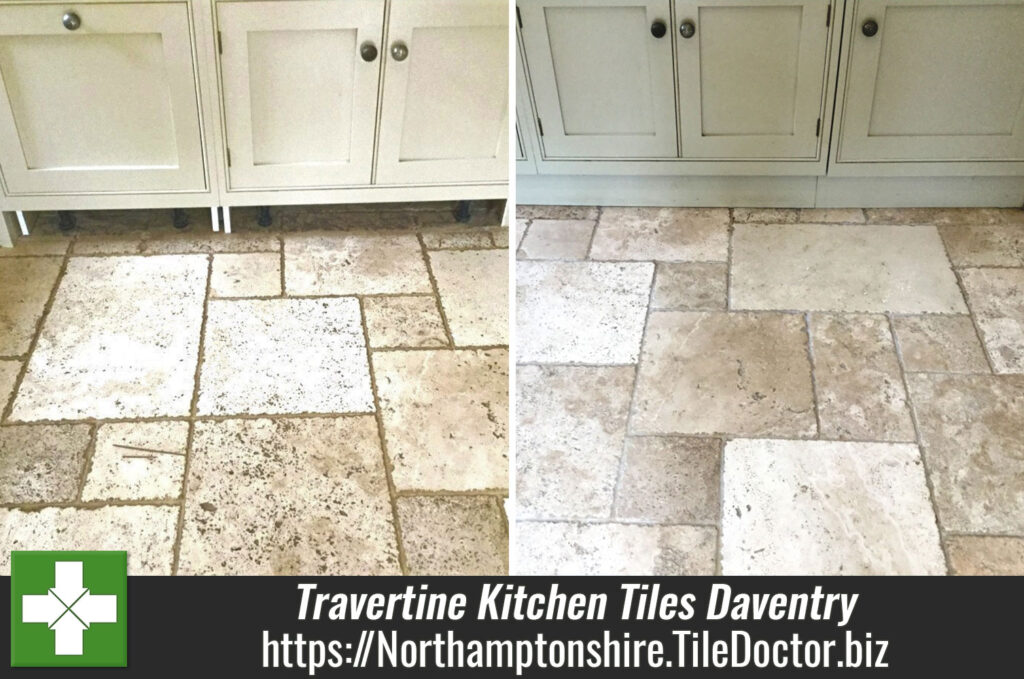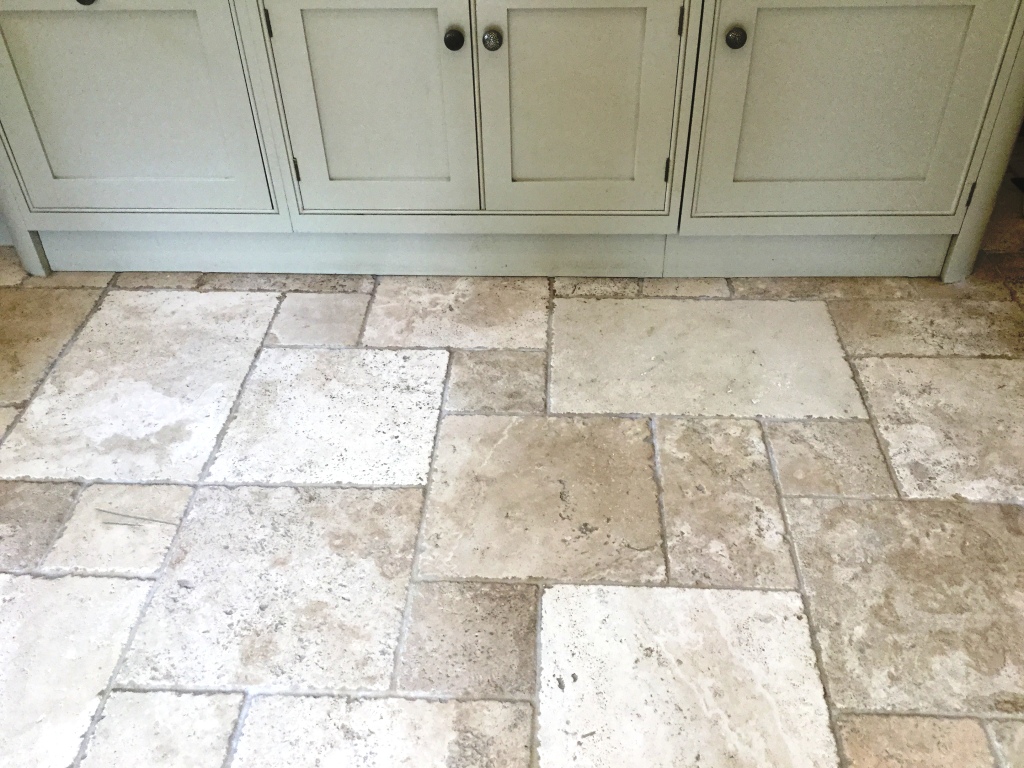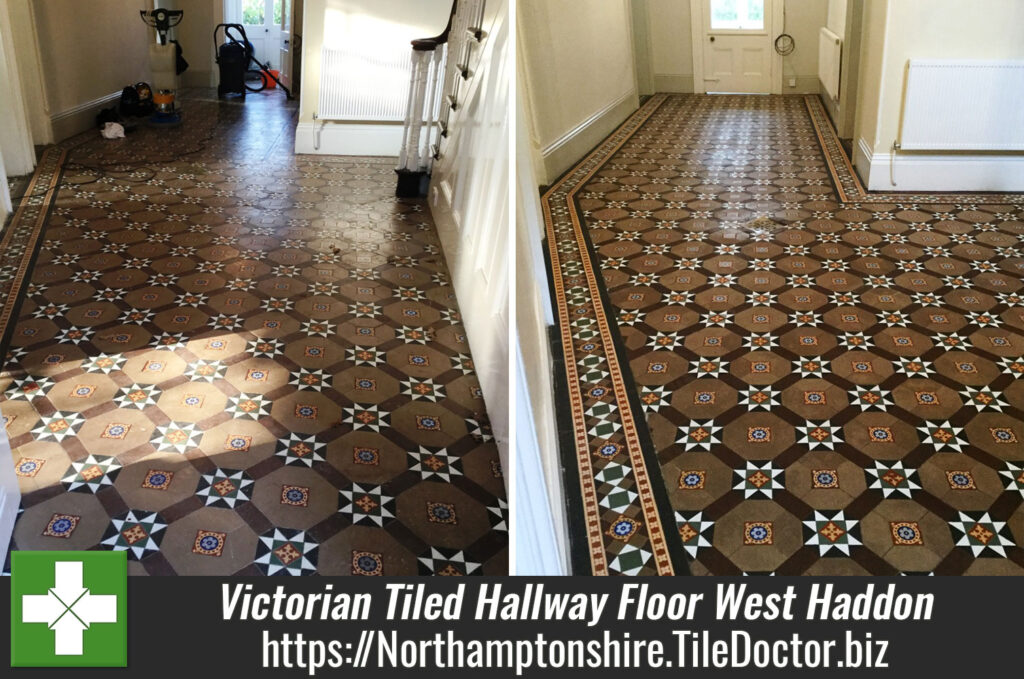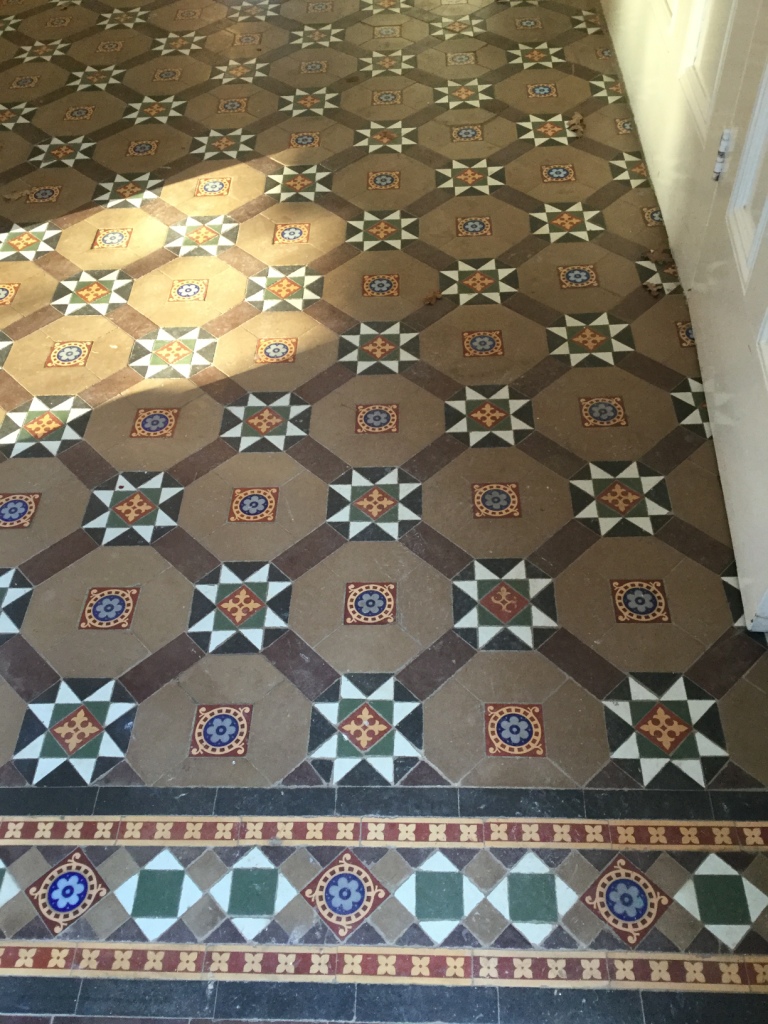Limestone Tiled Floor with Grout Haze Cleaned in Clipston
These photos are of a Limestone tiled floor which was installed in the Kitchen of a property in the small parish of Clipston, which is close to the towns of Market Harborough and Daventry, approximately three years ago. The customer was never very happy with it since it was laid as it never seemed to look clean asked me to cover over and work out what could be done.
On my initial visit I soon realised that the installer had not cleaned off all the grout from the tiles before applying the sealer. This effectively trapped the grout under the sealer and gave the whole floor a dirty appearance, this explained the problem the customer was frustrated with as she could never ever seem to get the floor looking clean.


Removing Grout Haze from Limestone Kitchen Tiles
I arrived on site on the arranged date, as it was a painted kitchen it was not possible to mask up the units, so I used a small hand-held polishing machine fitted with a six inch 400-grit burnishing pad to carefully clean around the edges and break through the sealant. This process was then repeated with a larger seventeen inch 400-grit burnishing pad fitted to a floor polishing machine throughout the rest of the area.
Once the original sealant had been removed using the burnishing pad the next step was to remove the Grout Haze by given the floor an acid wash with Tile Doctor Acid Gel. Being a gel, this product is easier to control than a liquid and sits on the surface where it’s needed to break down the unsightly Grout Haze. It’s left to dwell for a short period before being worked in with a special brush that is designed for this purpose. The resulting slurry is then removed with a professional wet pick up machine and the floor given a rinse with water to remove any trace of the product.
After treating the Grout Haze my next step was to refine the surface of the Limestone using a medium 800-grit and fine 1500-grit diamond encrusted burnishing pad which are applied with water and restore the polished appearance of the stone. The floor is rinsed with more water between the application of each pad to remove the slurry that is generated and then dried with the wet pickup machine.
Sealing a Limestone Tiled Kitchen Floor
I returned the following day to buff the tiles with a white polishing pad as the customer didn’t want a high shine finish which is normally achieved with the 3000-grit diamond burnishing pad, this gave a low sheen honed look as the customer had requested. The floor was then sealed with two coats of Tile Doctor Ultra-Seal which is a natural look sealer that and will protect the newly restored and polished tiles going forward.

‘Professional, floor looks much better’ – Vicki S, Clipston
I gave the customer some tips on maintenance and a complimentary bottle of Tile Doctor Stone Soap to enable her to keep the floor looking its best, this product is designed for the regular cleaning of polished stone floors and is pH neutral, so it won’t prematurely degrade the sealer.

Professional Restoration of a Limestone Tiled Kitchen Floor in Northamptonshire
Limestone Tiled Floor with Grout Haze Cleaned in Clipston Read More »










